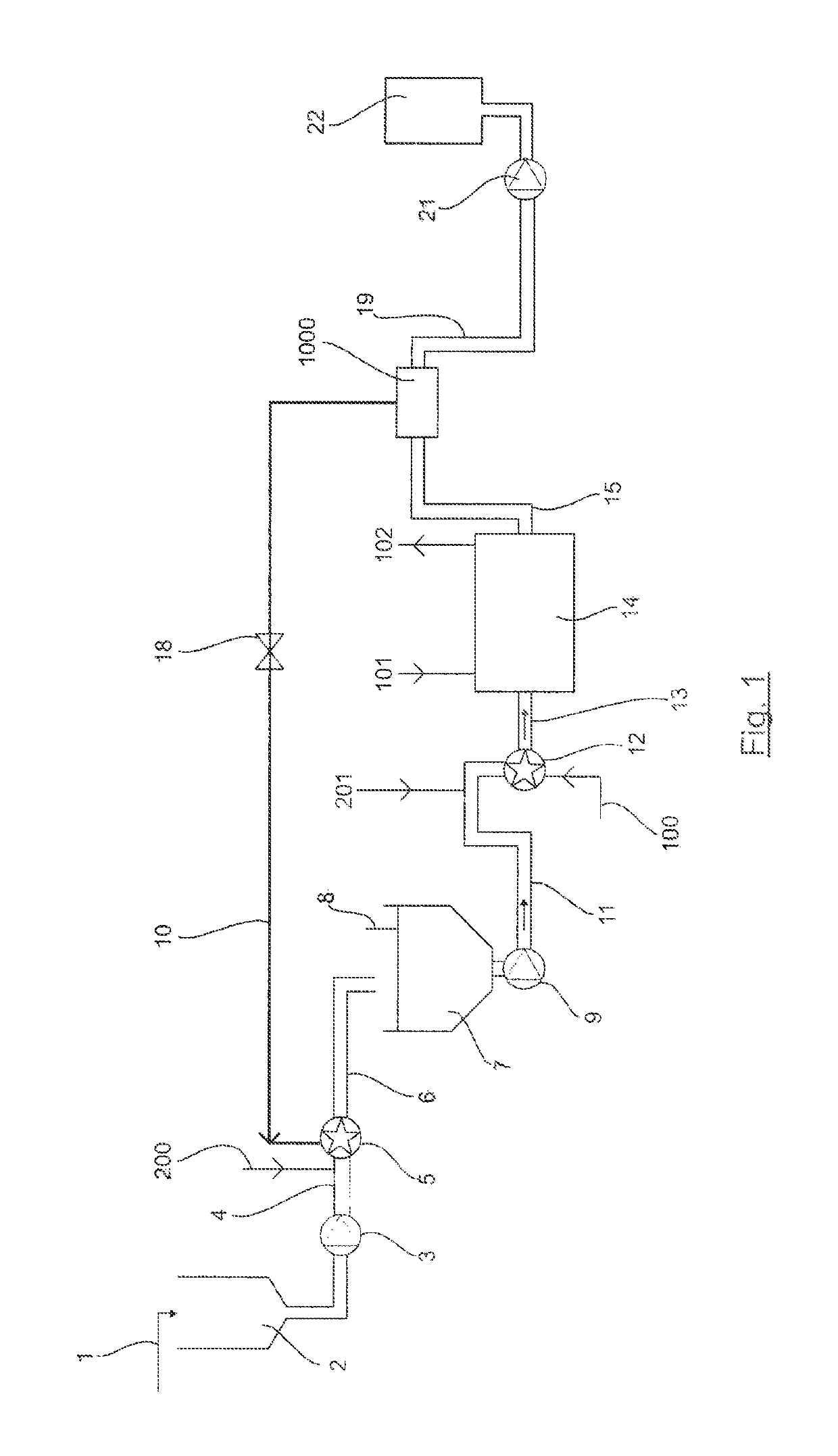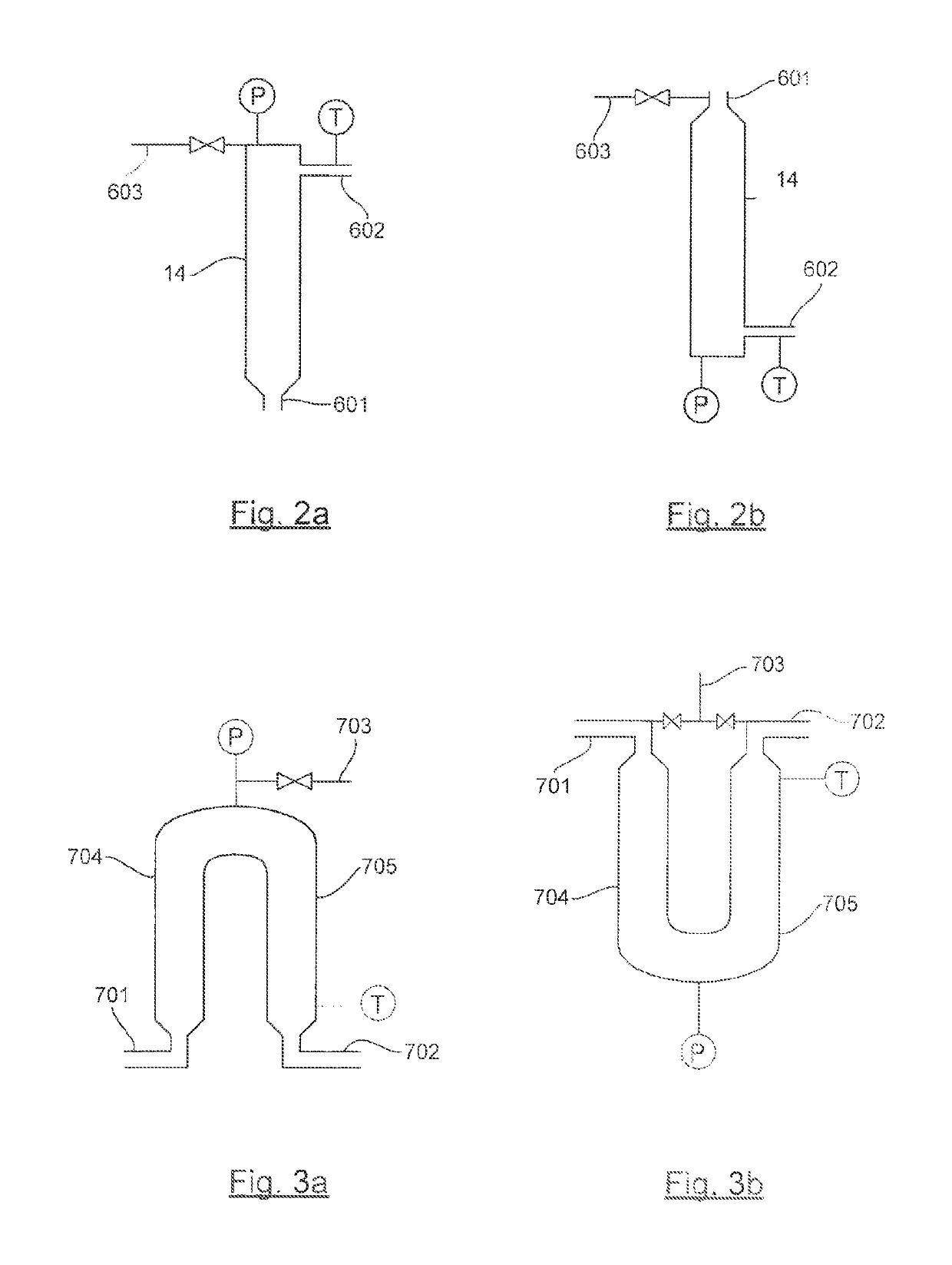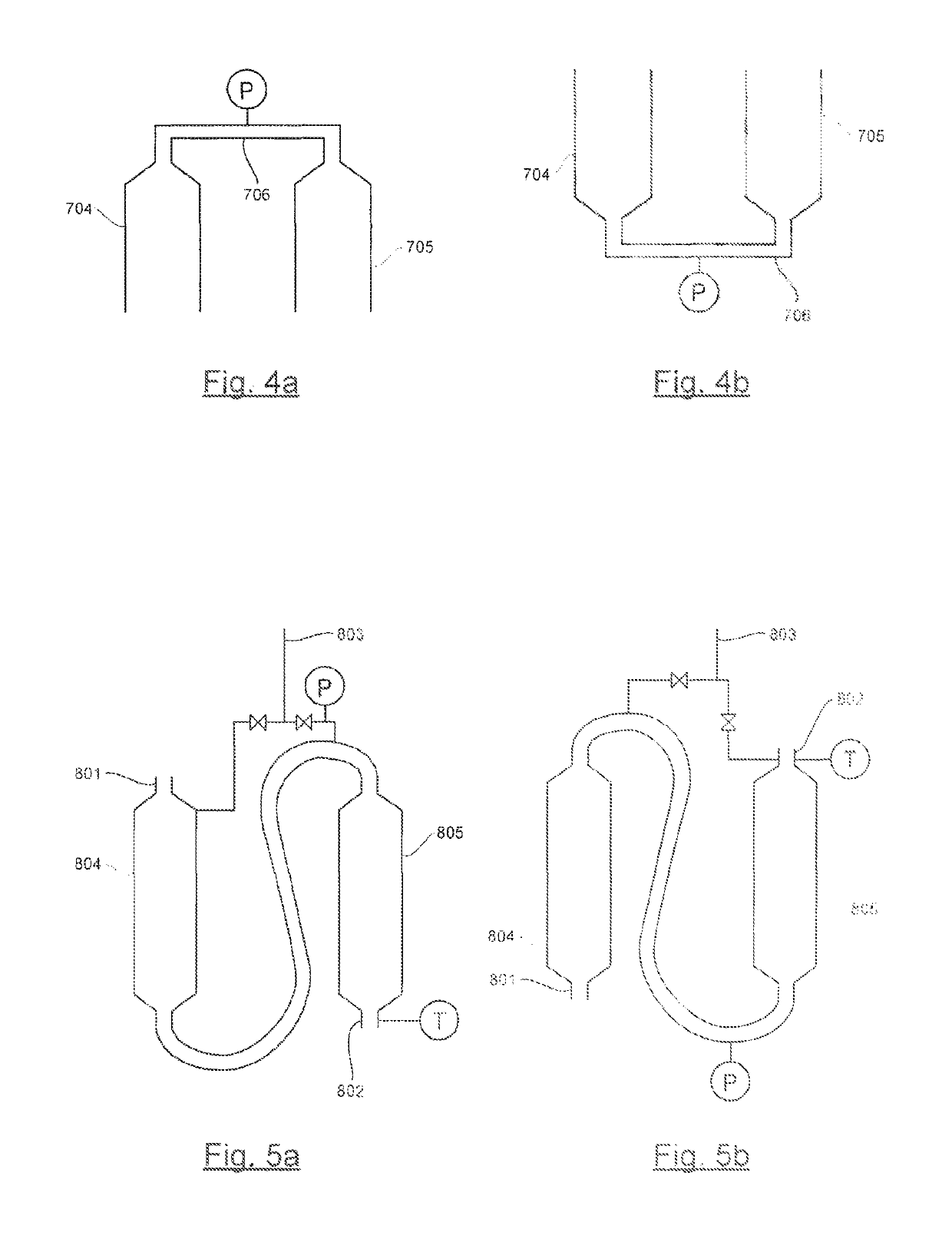Method for continuous thermal hydrolysis with recirculation of recovered steam
a thermal hydrolysis and steam recovery technology, applied in the direction of specific water treatment objectives, water treatment parameter control, waste based fuel, etc., can solve the problems of premature wear and tear, difficult management, and difficult degradation of certain organic compounds by biological means, and achieve non-negligible economic advantages, easy digestibility within the digester, and low cost
- Summary
- Abstract
- Description
- Claims
- Application Information
AI Technical Summary
Benefits of technology
Problems solved by technology
Method used
Image
Examples
first embodiment
6.2. Example of a First Embodiment
[0142]Referring to FIG. 6, a schematic description is provided of a device according to a first embodiment of the invention.
[0143]Only the differences between the device generally illustrated in FIG. 1 and the device according to this first embodiment illustrated in FIG. 6 are described.
[0144]According to this first embodiment, the means 1000 for producing recovered steam comprise a heat exchanger 90.
[0145]This heat exchanger 90 comprises a first inlet 901 into which there opens the pipe 15 through which the hydrolyzed sludge coming from the thermal hydrolysis reactor 14 is conveyed into this exchanger 90. It comprises a second inlet 902 to which there are connected means for leading in water, herein comprising a pipe 91. It also comprises a recovered steam outlet 903 to which there is connected the recovered steam injection pipe 10 which opens into the primary dynamic injector-mixer 5. This heat exchanger 90 also comprises an outlet 9...
second embodiment
6.3. Example of a Second Embodiment
[0162]Referring to FIG. 11, a schematic description is provided of a device according to a second embodiment of the invention.
[0163]Only the differences between the device generally illustrated in FIG. 1 and the device according to this second embodiment illustrated in FIG. 11 are described.
[0164]In this embodiment, the recovered steam production means comprise a flash reactor 16.
[0165]The pressure and the temperature of the hydrolyzed sludge when exits the reactor 14 are sharply and rapidly lowered within the flash reactor 16 in order to produce flash steam, the pressure of which will preferably range from 1 to 10 bar A and the temperature of which will preferably range from 100 to 180° C.
[0166]The flash steam thus produced, which constitutes the recovered steam directly produced from the heat of the hydrolyzed sludge, is conveyed into the primary dynamic injector-mixer 5 via the pipe 10 serving as a means for injecting recovered stea...
PUM
| Property | Measurement | Unit |
|---|---|---|
| pressure | aaaaa | aaaaa |
| temperature | aaaaa | aaaaa |
| temperature | aaaaa | aaaaa |
Abstract
Description
Claims
Application Information
 Login to View More
Login to View More - R&D
- Intellectual Property
- Life Sciences
- Materials
- Tech Scout
- Unparalleled Data Quality
- Higher Quality Content
- 60% Fewer Hallucinations
Browse by: Latest US Patents, China's latest patents, Technical Efficacy Thesaurus, Application Domain, Technology Topic, Popular Technical Reports.
© 2025 PatSnap. All rights reserved.Legal|Privacy policy|Modern Slavery Act Transparency Statement|Sitemap|About US| Contact US: help@patsnap.com



